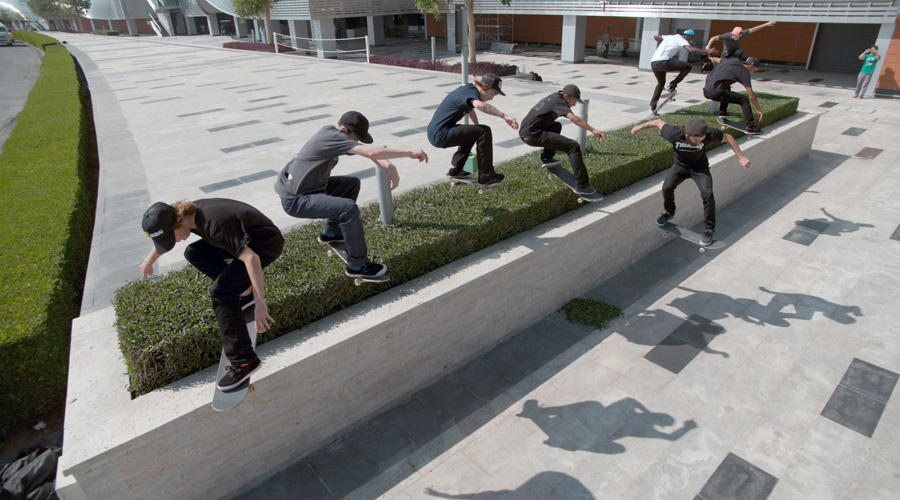Zumiez Inc. (Nasdaq:ZUMZ) reported fiscal first-quarter sales down 2.6 percent to $173 million and its same-store sales dropped 7.5 percent as the action-sports apparel retailer works to update its omni-channel strategies while admittedly facing a tough retail environment.
Despite adding 47 stores since the first-quarter 2015, Zumiez could not offset reduced mall traffic and the lack of a fresh fashion driver to get customers into its stores during the usually slower first half of the year, Zumiez CEO Rick Brooks told investors on the company’s June 2 conference call.
The company swung to a net loss of $2.1 million, or a loss of 8 cents per diluted share, for the fiscal first quarter, ended April 30, compared to a net profit of $2.8 million, or 9 cents per diluted share a year ago.
While the bottom-line performance was better than expected when officials gave their last update a month ago, they were nonetheless “not the results we would like to see,” Brooks said. The negative performance is forcing the company to reduce its planned new-store additions for 2016 — now planning to open 22 new stores in North America versus a pervious projection of 27, which represents 40 percent of new-store growth in 2015.
“While we still believe there’s a long-term opportunity for expanding our global store footprint, we must acknowledge near-term head winds, particularly as it relates to our North American business,” Brooks said. Zumiez held steady on its plan to open six stores in Canada and seven in Europe.
Looking ahead, Zumiez officials gave cautionary notes for the second quarter, but were more optimistic long term.
“As we head into the second quarter, we see many of these negative top-line trends persisting,” Brooks said. “Net sales for the four weeks ended May 28, 2016, came in at $50 million, down from $51.5 million during the four weeks ended May 30, 2015. May same-store sales comps came in at a negative 7.6 percent, and were negatively impacted by the Memorial Day shift.”
Officials expect the company’s fiscal second-quarter sales to come in the range of $172-$176 million with a net loss between 9-13 cents per diluted share. Comp sales are expected to fall between 6-8 percent. Part of those expected declines are also related to increased discount activity from several competitors in bankruptcy officials acknowledged — eg. PacSun, Sports Authority, Sports Chalet — and minimum wage increases, officials said.
While it faces short-term losses, Zumiez continues to invest in expanding its long-term omni-channel efforts, Brooks said. Gross margins are expected to continue to decline in the second quarter by 200-250 basis points and SG&A expenses are projected to climb 300-350 basis points.
“While the full implementation of this interface won’t be complete until 2017, we’re excited about this investment will allow us to better serve our customers,” he said. “The investments we’re making in our omni-channel infrastructure will give us further power and flexibility to address localized trends in a unique and authentic manner through micro-level assortment planning; optimize each touch point with the consumer to enhance in-store telecommunications infrastructure, a faster and more stable web platform, and robust omni-channel functionality; develop and enhance an enduring relationship with our customers through our Stash loyalty program; and enable our best-in-class sales teams to serve their local customers with nearly 100-percent localized in-store fulfillment of online orders.”
The latter is an area where Brooks believes Zumiez is ahead of much of the industry, as it closed its centralized distribution center in favor of using its retail outlets as defacto fulfillment centers to largely speed up delivery of product — something of large importance to the millennial generation.
“I can tell you that we have achieved that objective,” Brooks said. “We have significantly improved the speed to our customer through localized fulfillment. There is then hopefully a benefit over the long term of increased margin, by being able to harvest slow-moving product in certain locations or regions as we fully optimize this model. Through three months, we feel good about the changes we made at the end of 2015.”
Brooks concluded with some general retail observations, saying there are still many changes ahead for the marketplace.
“We are going through, as a retail industry, a very painful process over the last five and six years,” he said. “I think in each niche there’s going to be a dominant player that emerges a winner, a winning player in each niche of retail. I think in lifestyle retail, where we’re playing, I think the winning model in my opinion is a global lifestyle footprint where you are doing something in a highly differentiated perspective, again working with young brands and helping young brands grow their business across a global platform. As a global retail partner for them, you’re providing a very distinctive in-store experience as part of a community. Then you’re leveraging all that on a domestic and global basis, with an incredibly strong integrated channel-less, omni-channel effort.”
Photo courtesy Zumiez
















